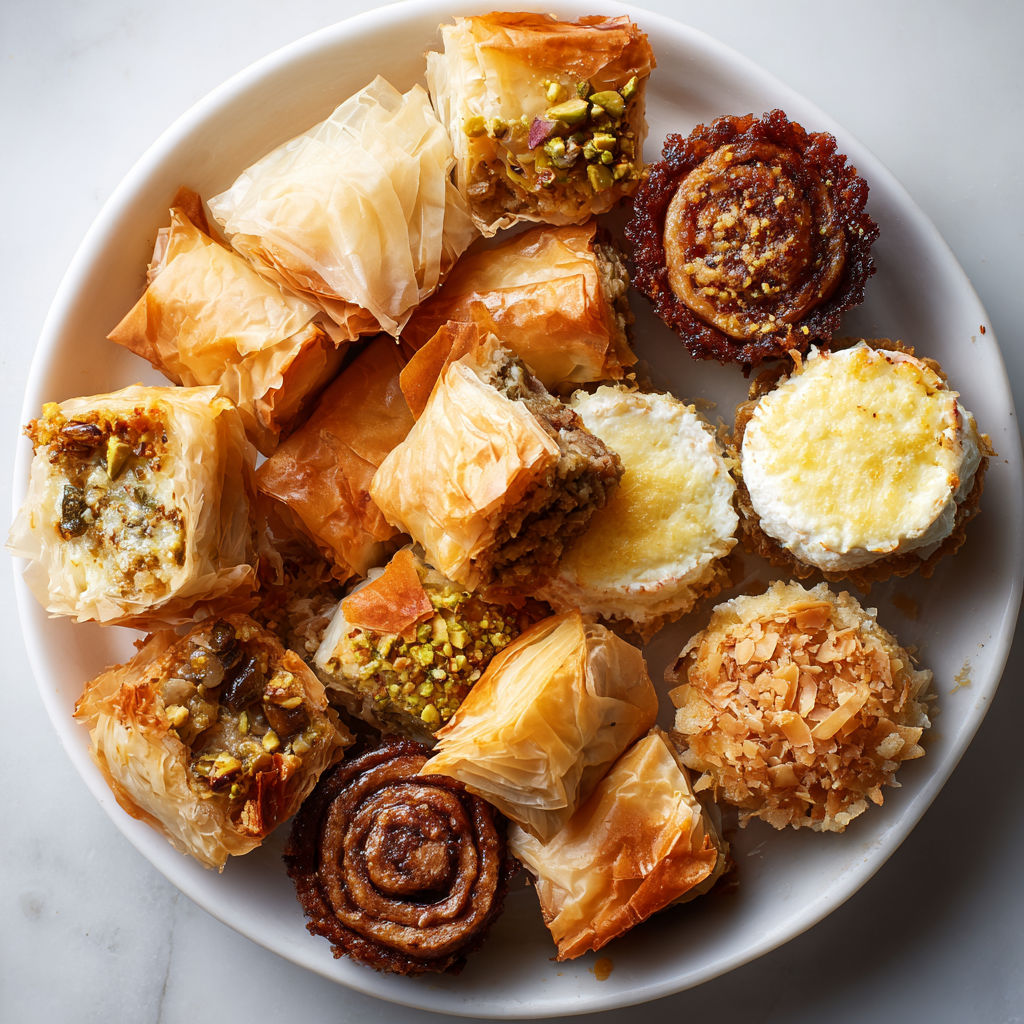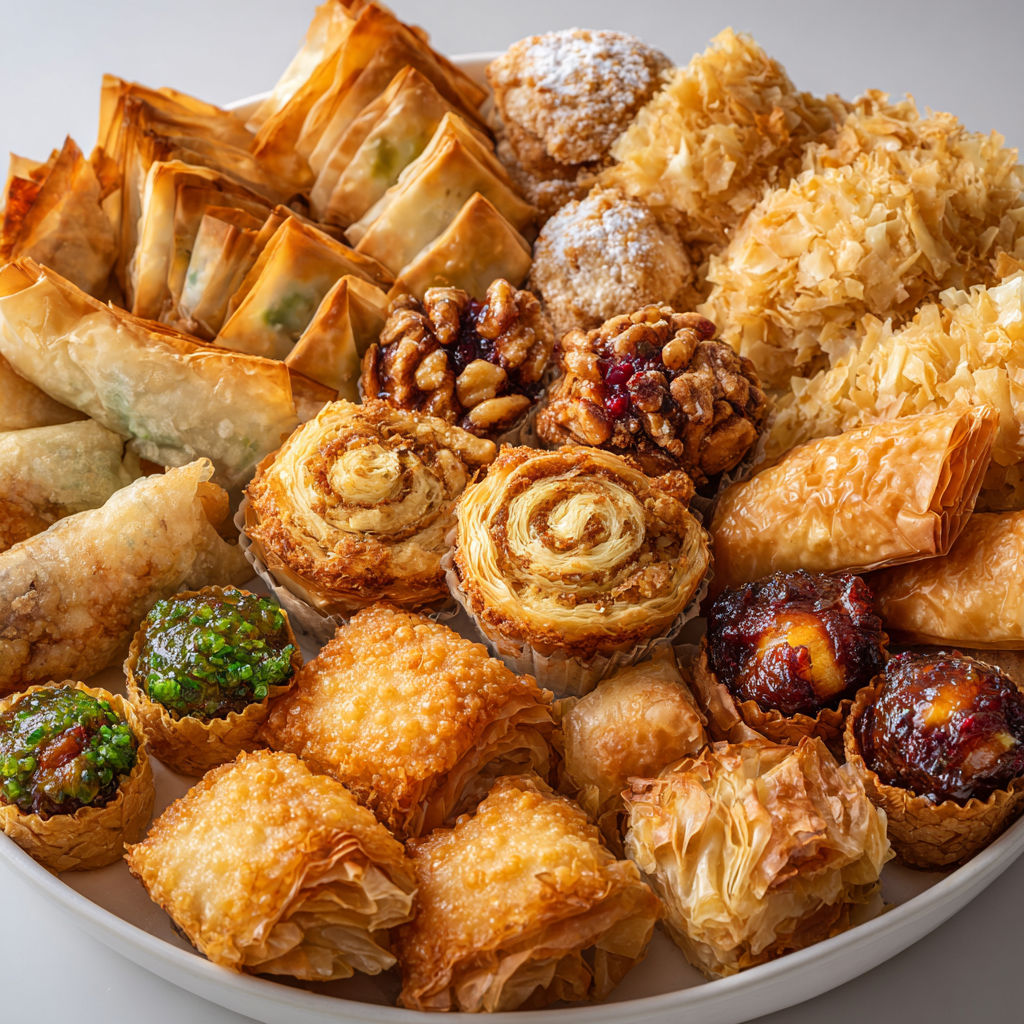 Save It
Save It Phyllo dough’s impossibly thin sheets crisp into golden perfection offering creative cooks a world of new savory and sweet possibilities. Once you master the art of handling phyllo you can make everything from flaky hand pies to elegant tarts that wow guests with every tender bite.
My first phyllo cheese bites disappeared before they cooled and my family now associates the buttery aroma with festive gatherings. These recipes quickly became our go-to for any occasion requiring something a little special but stress free.
Ingredients
- Phyllo dough: each sheet provides structure and signature flaky layers look for dough that is soft bendable and free of dryness
- Melted butter or olive oil: essential for crisp rich layers I like using a silicone brush for even application
- Quality cheese: such as feta goat cheese or ricotta brings creamy tang choose blocks over precrumbled for best flavor
- Fresh herbs: like dill parsley or chives brighten savory fillings pick bunches that look vibrant and smell fresh
- Seasonal vegetables: spinach kale mushrooms artichokes offer variety and color aim for firm vegetables without bruising
- Nuts and dried fruits: bring texture and sweetness in desserts choose unsalted nuts and moist plump fruit
- Spices: cinnamon nutmeg smoked paprika amplify flavor in both sweet and savory versions always check freshness before using
- Honey or preserves: for dessert applications balance tartness and bind ingredients pure honey or highquality preserves add rich undertones
Instructions
- Prepare the Phyllo Workspace
- Unwrap phyllo dough and lay it flat on a large cutting board or clean surface. Cover the stack with a lightly damp towel to keep it from drying out while you work
- Mix the Filling
- In a medium bowl combine cheeses herbs vegetables or other selected fillings. Season with salt and spices. For sweet applications toss fruits and nuts with a little honey or sugar and your chosen spices
- Shape and Fill
- Lay out one phyllo sheet and brush with melted butter or oil. Add another sheet and repeat the brushing for at least three layers. Place a spoonful of filling along one edge or in the center depending on desired shape and fold or roll as needed. For tartlets gently press the sheets into a muffin tin before adding filling
- Seal and Arrange
- Fold phyllo edges tightly around the filling to form small parcels triangles or rolls. Place on a parchmentlined baking sheet or into your baking dish. Repeat with remaining sheets and filling keeping unused phyllo covered
- Bake to Golden Perfection
- Preheat oven to 375 degrees Fahrenheit. Brush the tops with more butter or oil for full crispiness. Bake for 18 to 25 minutes or until the tops are deep golden and edges look layered and dry. Let cool briefly before serving as fillings will be hot
 Save It
Save It I absolutely love how the fresh dill and lemon zest in savory fillings brighten the whole dish. Watching my kids tear into warm cheesy parcels together has become a cherished kitchen memory.
Storage Tips
Store baked phyllo treats in an airtight container at room temperature for up to two days though they are best the day they are baked. If storing longer refrigerate and reheat in a hot oven to regain crispness. Unbaked phyllo dough should always be kept in the refrigerator and used before the expiration date for the flakiest results.
Ingredient Substitutions
If you do not have access to traditional phyllo dough try using glutenfree or whole wheat versions available at specialty stores. Ricotta or mascarpone can stand in for goat cheese if you desire a milder flavor. Any fresh herbs or roasted seasonal vegetables work as filling options so embrace what looks best in your market.
Serving Suggestions
Offer phyllo bites with a bright dipping sauce such as tzatziki or spiced yogurt for appetizers. Pair sweet phyllo parcels with strong tea or espresso for a lovely afternoon treat. Layer phyllo cups with whipped cream and fruit for a rustic dessert that pleases all ages.
Cultural and Historical Context
Phyllo dough has its roots in Middle Eastern and Mediterranean cuisines where it is often layered with nuts and sweeteners for celebratory desserts. Savory recipes such as spanakopita or börek are beloved side dishes and snacks across many cultures. Each new adaptation preserves a bit of tradition while letting home cooks experiment with unique local ingredients.
Seasonal Adaptations
Choose spinach and wild garlic in spring for freshness in savory pies. Pair apple cinnamon or fig for warming fall desserts. Use asparagus or roasted peppers for a summer inspired take on phyllo tartlets.
Success Stories
One reader wrote in to say their phyllo wrapped shrimp was the surprise hit of a family reunion. Another friend mentioned bringing savory phyllo cups to a potluck and having every guest ask for the recipe. These dishes become signatures in potlucks and parties thanks to their satisfyingly crisp texture.
Freezer Meal Conversion
Assemble unbaked phyllo parcels and freeze in a single layer in an airtight container. When ready to serve brush with butter or oil straight from the freezer and add an extra five minutes to your baking time. This trick guarantees homemade appetizers on demand.
 Save It
Save It Whether you are crafting a batch of savory cheese triangles or swirling spiced fruit inside flaky parcels do not be afraid to get creative with fillings and shapes. The beauty of phyllo is that each creation can reflect your personal taste and every meal becomes a small celebration.
Recipe FAQs
- → What are some savory phyllo dough ideas?
Try wrapping creamy cheeses and herbs, vegetables, spiced meats, or fish fillets in phyllo sheets for crisp, flavorful bites.
- → How do you handle phyllo dough without tearing it?
Keep phyllo covered with a damp towel, brush sheets lightly with butter or oil, and handle gently to avoid tears.
- → Can phyllo dough be used in desserts?
Absolutely! Use phyllo for cinnamon rolls, fruit parcels, cheesecake cups, or as a crumble topping for sweet dishes.
- → Is phyllo dough suitable for special diets?
Phyllo dough is naturally vegan and some brands offer gluten-free versions for dietary needs.
- → What are essential tools for working with phyllo?
Use a pastry brush, baking sheet or muffin tin, sharp knife or scissors, and a damp towel to keep dough moist.